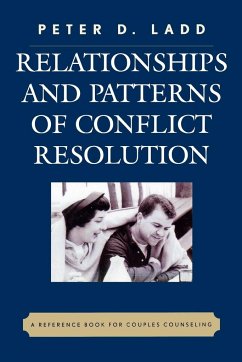Dr. Ladd has written a reference book on couples counseling that explores six contemporary relationships and discusses how couples may change from one to another according to their life experiences. In addition, six common styles of conflict resolution are addressed that may make relationship changes less painful and difficult are also addressed. When we realize that one of the most common methods for transforming the union between two people is through divorce, then the possibility of changing a relationship, instead of changing a partner, may become a more attractive alternative.
Hinweis: Dieser Artikel kann nur an eine deutsche Lieferadresse ausgeliefert werden.
Hinweis: Dieser Artikel kann nur an eine deutsche Lieferadresse ausgeliefert werden.








